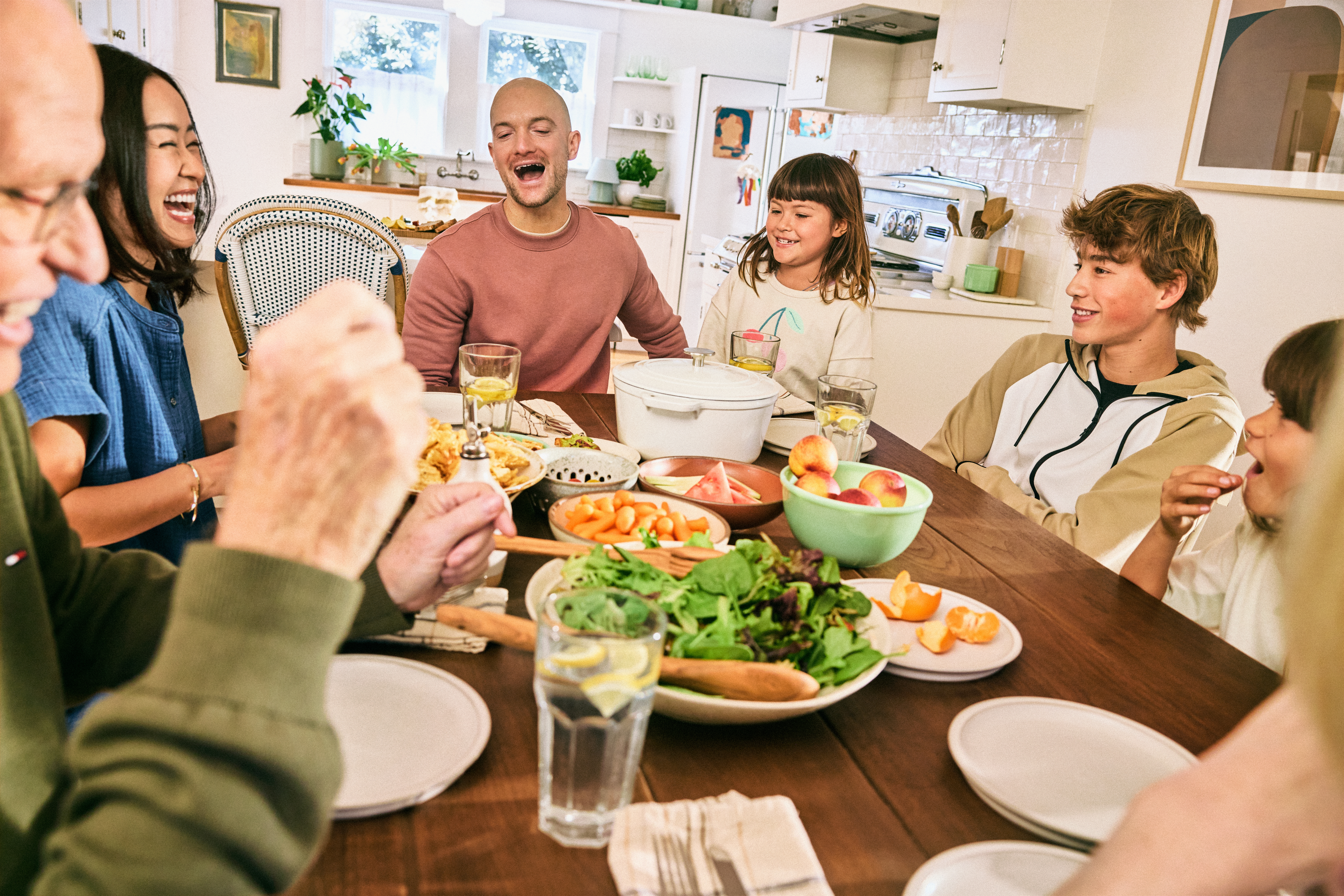A (Compassionate) Conversation About Processed Food
It’s time for a more compassionate conversation about food wellness.
Fast Facts
- Ultra-processed foods include industrially produced ingredients, and normally feature things you wouldn’t find in your kitchen on the ingredient list.
- 70% of the foods in most grocery stores are ultra-processed.
- Hyperpalatable foods are UPFs that are engineered to override your body’s signals that it’s full.
- It’s important to be informed about these foods and what they are, but build a realistic, achievable meal plan for yourself and your family, based on your circumstances.
The diet discourse on the internet is loud and insistent: Not enough protein! Too many ultra-processed foods! Try this superfood! The chatter is, at best, mildly informative, and at worst, completely unrealistic, shame-provoking, and veering into classist territory. Take this NPR piece around “protecting kids” from UPFs for instance. It takes a pretty tough stance that removing processed food from the home should be every family’s goal. It ignores the systemic issues within the food industry (ahem, like 70% of grocery store foods being ultra-processed) and places unrealistic expectations on working families. Food wellness isn’t a one-size fits-all solution. Everyone’s individual health needs and resources must factor into the equation. And food education should come from a judgment-free space, so parents can take it from there.
So, let’s talk about what ultra-processed foods actually are. It’s not about “good” or “bad” food, but rather how much a food has been messed with. UPFs are products made of industrially produced ingredients and created through a series of industrial techniques and processes. Most food is processed in some way, so public health researchers developed a classification system that helps break down the distinctions:
- Unprocessed or minimally processed foods include whole foods like fruits, vegetables, meat, beans, eggs, plain yogurt, and coffee.
- Processed culinary ingredients refer to items used to prepare whole foods like butter, oils, sugar, and spices.
- Processed foods are made by combining the previous groups and include salted nuts, cured meat, canned fish and vegetables, and freshly made bread.
- Ultra-processed foods are made of industrially produced ingredients and include most breakfast cereals, frozen meals, potato chips, soft drinks, and candy bars. A good rule of thumb is if the ingredients aren’t in your kitchen, it’s likely ultra-processed.
“It’s not about “good” or “bad” food, but rather how much a food has been messed with.”
Ask most nutrition experts and they’ll agree—eating ultra-processed food on occasion is no big deal. In fact, highly processed foods have played a key role in improving global nutrition by providing fortified, shelf-stable options to a broader range of populations, particularly in low-income regions. It’s far more helpful to evaluate food based on its nutritional density rather than making a moral judgement about entire categories of food. That kind of charged, “good” versus “bad” language can be triggering for anyone recovering from disordered eating or chronic conditions that impact their diet. The overriding guidance is pretty straightforward: It all comes down to balance and moderation.
Photographed by Meredith Brunner
Where it gets a little sticky is when it comes to hyperpalatable foods or HPFs. These foods have been engineered to hit a perfect “bliss” point of fat, sugar, and salt, overriding our body’s natural satiety signals. Meaning you’re less likely to understand that you’re full and you’re more likely to consume more calories of a certain food if it’s an HPF. They’re designed to be addictive, rewarding to eat, and are often more convenient and affordable than meals prepared with fresh ingredients. The odds are stacked against us, but this is a good time to remind you the goal isn’t to eliminate all highly processed foods from your diet. Sometimes the easier choice is the healthier choice for your life, on any given day. In a world of limited time and resources, a box of macaroni and cheese isn’t a failure, it’s a solution.
Most of the research on ultra-processed foods is observational, showing association over causation. But the data generally shows a connection between UPF consumption and a host of health issues, including obesity and cardiovascular health, some cancers, depression, and gastrointestinal disorders.
“Hyperpalatable foods are designed to be addictive, rewarding to eat, and are often more convenient and affordable than meals prepared with fresh ingredients.”
So, how can families support their wellness goals without inviting in potentially harmful, restrictive eating behaviors? Start small and focus on cutting down on just one hyperpalatable item you typically buy each month. Be curious about ingredient labels. Find the pasta sauce with ingredients you recognize.
Communal cooking is another way to build food literacy among kids. It’s a great forum for healthful conversation around the food choices you’re making as a family, to hear more about their preferences, and reframe why certain foods are so delicious—because they’re engineered to be that way!
My family and I are still figuring it out, one meal at a time. In those moments of shared effort, when we’re chopping veggies together or just talking about what makes a meal feel good, I’m reminded that wellness isn’t a solo battle at all. It’s a shared mission to honor our cravings with compassion and care.





